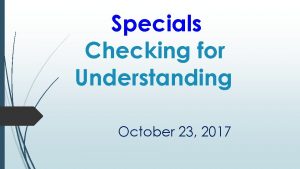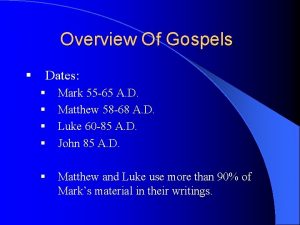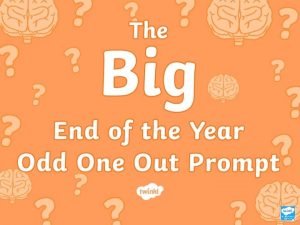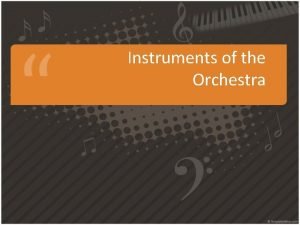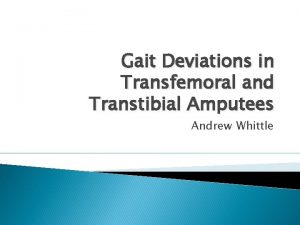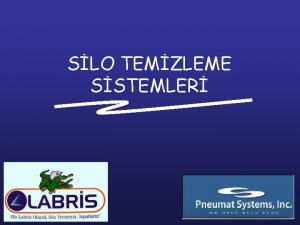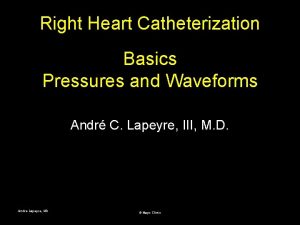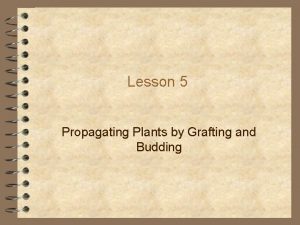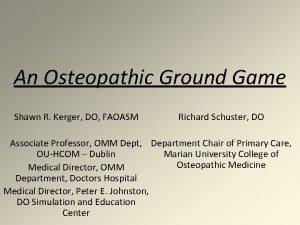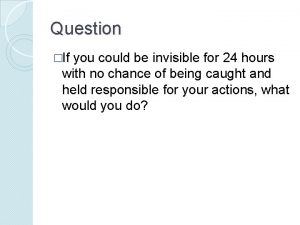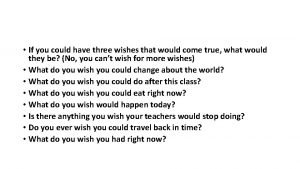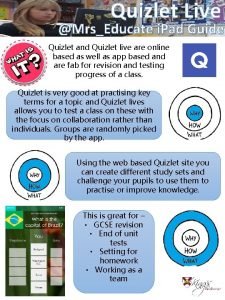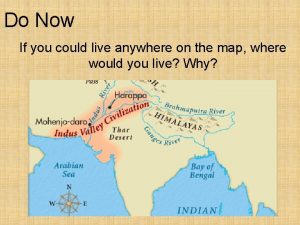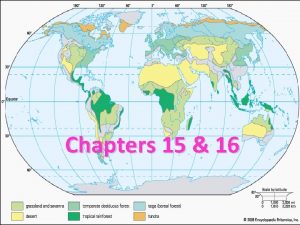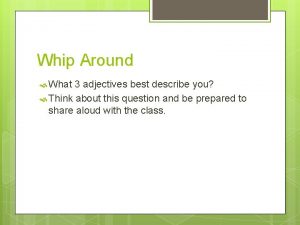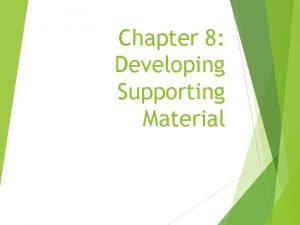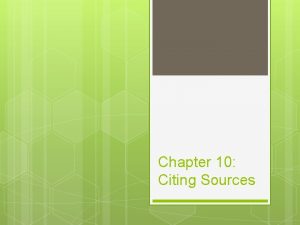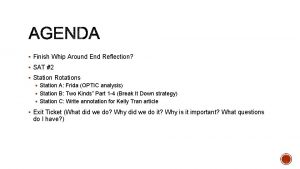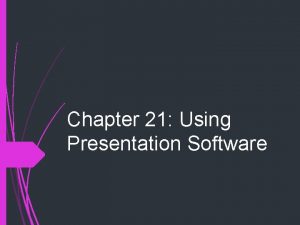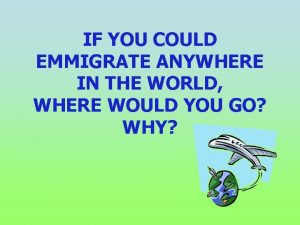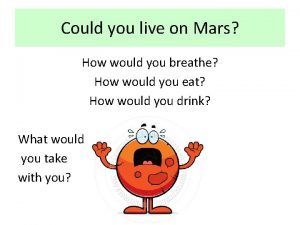Whip Around If you could live anywhere in




























- Slides: 28

Whip Around • If you could live anywhere in the world, where would it be and why? • Be prepared to share aloud with the class.

CHAPTER 4 CONNECTING THROUGH VERBAL COMMUNICATION Copyright © 2014, 2011, 2008 Pearson Education, Inc. All Rights Reserved.

Language Activity • Refer to handout. • Work with 1 -2 partners. • Be honest and be prepared to share aloud.

The Importance of Language • Language is a structured system of signs, sounds, gestures, or marks used to express ideas and feelings among people within a community • Language is powerful • Affects our thought Copyright © 2014, 2011, 2008 Pearson Education, Inc. All Rights Reserved.

Language Is Powerful • Muted Group Theory: suggests that power and status in communication are linked. Groups who feel underrepresented or marginalized feel more silenced then the dominate or more powerful groups in the society. • Style-Switch: refers to when people from a sub or co-culture will use one language or style with similar group members but will switch to the “dominant” or generally promoted culture when appropriate.


The Elements of Language • The elements of language are sounds, words, grammar, and meaning. • • Sounds Words Grammar Meaning

The Elements of Language • Sounds • The first element of language is the concept of sound. • We are able to produce sounds before we know language. • Sounds help us create language so we can share meaning.

The Elements of Language • Words, the second element of language, are symbols that stand for objects or concepts. • Words have meaning because communities and cultures give them meaning. • Idioms are words with meanings that cannot be understood according to usage.

The Elements of Language • Grammar • The third element of language is grammar. • Grammar is the term for rules that govern how words may be joined into phrases and sentences. • These rules are crucial to competent communication.

The Elements of Language • Meaning The study of meaning, the fourth element of language, is called semantics. • Words have denotative and connotative meaning. • Denotation is a word’s standard dictionary definition. • Connotation is what a word suggests because of feelings or associations it evokes. • Words can be concrete or abstract. • Words can be specific or vague.

The Elements of Language • Meaning depends on commonalities. • Language can obscure meanings. • Jargon is language used by certain groups that may be too specialized to be understood by the general population. • Slang is language used by groups to keep the meaning of the communication within the group. • Euphemism is the use of an inoffensive or mild expression in place of one that might offend. • Doublespeak is the deliberate misuse of language to distort meaning.

Language Can Obscure Meanings • Regional variations: The local expressions that vary from one geographic are to the next. • Slang: Cultural expressions influenced by popular, geographic, ethnic and regional culture within a group or community • https: //www. youtube. com/watch? v=h. GXAZnw. FHB 8 • Jargon: Technical language used by specific disciplines and groups that is too specialized for the general population. • https: //www. youtube. com/watch? v=D 2 f 8 Pjh 9 Ic. A 13

Language Can Obscure Meanings v Euphemisms: The use of inoffensive or mild language in place of one that might offend, cause embarrassment, or suggest something unpleasant. v https: //www. youtube. com/watch? v=sx. R 2 Mebj. M 5 A v Doublespeak: The deliberate misuse or distortion of language to purposefully create vague meaning. v How do I look? “Better than Lindsey Lohan. ” v https: //www. youtube. com/watch? v=sjwqwa 21 je. U 14

Language-Based Barriers to Communication • Attitude shaping • Indiscrimination: Neglecting individual differences and overemphasis of similarities; stereotyping. • Indexing: Technique to reduce stereotyping by recognizing individual differences by events persons or ideas. • Dating: A form of indexing that sorts people, events, or ideas by chronological timeline; generational identity • https: //www. youtube. com/watch? v=9 a. VUoy 9 r 0 CM (The Office, Diversity Training) • Meanings Can Be Misunderstood • Misunderstanding between a sender and a receiver is called bypassing. 15

Language-Based Barriers to Communication (cont. ) • Polarization: to view things in extremes • Pendulum effect: the escalating conflicts between two opposing points of view • E. g. Paris Hilton and Nicole Richie 16

Language-Based Barriers to Communication • • Meanings Can Be Misunderstood Language Can Shape Our Attitudes Language Can Cause Polarization Culture Affects Language Use Copyright © 2014, 2011, 2008 Pearson Education, Inc. All Rights Reserved.

Language-Based Barriers to Communication • Language can be sexist or homophobic. • Our goal should be to use gender-inclusive language, language that does not discriminate against males or females. • Sexist language creates sexual stereotypes or implies that one gender is superior to another.

Language-Based Barriers to Communication (cont. ) • Culture • Linguistic determinism: Theory that language determines and shapes thought • Linguistic relativity: Theory that suggests that a person’s language community shapes perception 19

Language-Based Barriers to Communication (cont. ) • Culture: Hall’s Theory of Context • High context: A culture in which of the meaning of the communication is driven from the location or situation • Low context: A culture in which the meaning of the communication is driven from the messages themselves. 20

Language and Technology • Refines and redefines culture • Advantages vs. disadvantages • Influence on thought • Changing the very vocabulary of modern language • Increasing the awareness of the world through social media and access to information Copyright © 2014, 2011, 2008 Pearson Education, Inc. All Rights Reserved.

Language and Technology • Technology is redefining language and is creating an new perception of language • Terminology that is being absorbed in the culture – Social networking, texting, etc… 22

How to Use Language Effectively • Use Accurate Language • A wrong word can distort the intended message. • Use Vivid Language • Vividness is active, direct, and fresh language that brings a sense of excitement, urgency, and forcefulness to a message. • Use Immediate Language • Verbal immediacy identifies and projects the speaker’s feelings and makes the message more relevant to the listener.

How to Use Language Effectively • Use Appropriate Language • Different kinds of language are appropriate to different situations. • Use of inappropriate language damages credibility. • Use Metaphorical Language • A metaphor is a figure of speech that associates two things or ideas that are not commonly linked, as a form of description.

Think-Pair-Share (with someone you have not worked with) 1. Why do three people who witness the same event see and describe it in various ways? 2. How or why do some communication interactions work better than others? 3. What kinds of problems do you encounter when communicating with others? 4. What do you do to get around those problems or reach understanding?

Eddie Lizzard • http: //www. youtube. com/watch? v=1 h. JQsvo. Y 6 VU

Quiz 4

Group Project Work Time
 Injustice anywhere is a threat to justice everywhere essay
Injustice anywhere is a threat to justice everywhere essay Metaphase pdm
Metaphase pdm Whip around strategy
Whip around strategy Example of what goes around comes around
Example of what goes around comes around Goes around comes around meaning
Goes around comes around meaning He should be snarling around houses
He should be snarling around houses Whip-cracking in the czech republic and slovakia
Whip-cracking in the czech republic and slovakia Lead tipped whip
Lead tipped whip Flagella whip
Flagella whip Taursus dates
Taursus dates Flagella whip
Flagella whip Arterial line whip
Arterial line whip Odd one out clay family food high relay
Odd one out clay family food high relay Whip like flagella
Whip like flagella What are the four families of the orchestra
What are the four families of the orchestra Hand signal charts for cranes
Hand signal charts for cranes Transtibial gait deviations
Transtibial gait deviations Binwhip
Binwhip Catheter whip artifact
Catheter whip artifact Grafting plants
Grafting plants Whip tilt shot
Whip tilt shot Navicular whip
Navicular whip Figure of speech of poem animals by walt whitman
Figure of speech of poem animals by walt whitman You were the word at the beginning
You were the word at the beginning If i could only teach you one thing why god made you
If i could only teach you one thing why god made you If you could see the future what would you do
If you could see the future what would you do If you could be invisible what would you do and why?
If you could be invisible what would you do and why? If i had three wishes they would be
If i had three wishes they would be Quizlet.com/live
Quizlet.com/live


